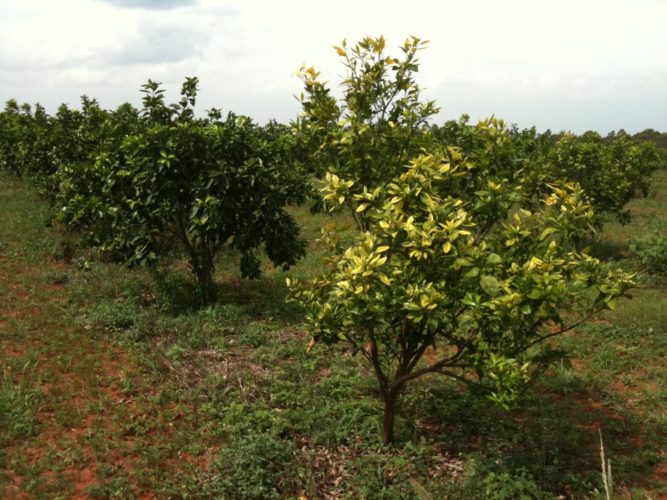Emphasizing effectiveness of control strategies may be key to combating plant pathogens.
To successfully combat a crop-threatening disease, it may be more important to educate growers about the effectiveness of control strategies than to emphasize the risk posed by the disease, according to new research by Alice Milne of Rothamsted Research in Harpenden, U.K., and colleagues. These findings appear in PLOS Computational Biology.
Disease-control campaigns help to combat plant pathogens that threaten to spread among crops, but are only successful if they are sufficiently well coordinated and if enough growers and other stakeholders comply. However, most mathematical models of disease control have neglected how people’s opinions about disease-control strategies influence their decision to participate.
To better understand how opinions affect the success of a control campaign, Milne and colleagues coupled a mathematical model of the spread of citrus huanglongbing disease (HLB) with a model of human behavior that incorporates findings from a survey of growers. HLB threatens citrus production around the world, and can only be controlled if neighboring growers coordinate use of pesticides and other control strategies.
Analysis of the combined models’ predictions highlights the importance of maintaining frequent engagement between growers and people who provide advice and support on HLB control. It also suggests that educating growers about the effectiveness of control strategies may be far more important than emphasizing how much of a risk HLB poses to crops. Many campaigns focus on disease risk, but doing so may be unnecessary and lead to loss of trust if an epidemic never actually occurs.
“This study shows the importance of cross-disciplinary approaches to tackle serious disease outbreaks,” Milne says. “We used an infectious disease of citrus trees, but our results are likely applicable to serious human diseases, as well.”
Next, the researchers plan to investigate other systems in which human behavior plays an important role in programs to monitor and control invasive pests or diseases. This will involve deeper exploration of stakeholder values and motivation, as well as development of new methods to represent these viewpoints in mathematical models.
Read the paper: PLOS Computational Biology
Article source: PLOS via Eurekaalert
Image credit: Tim Gottwald








